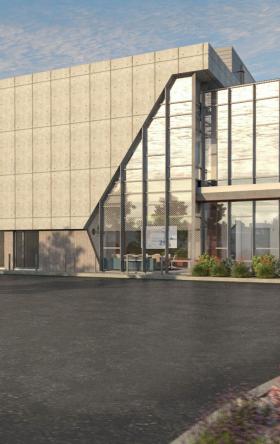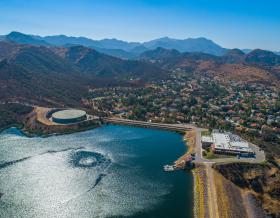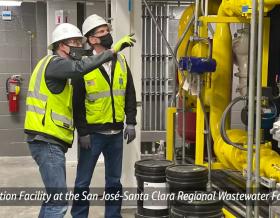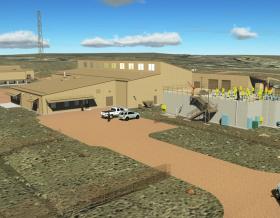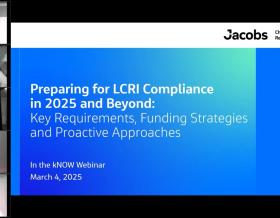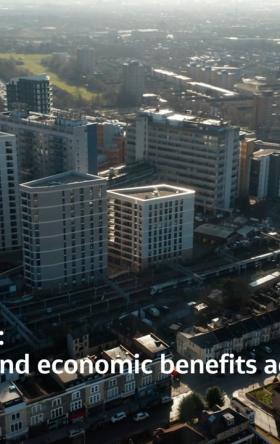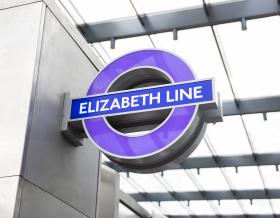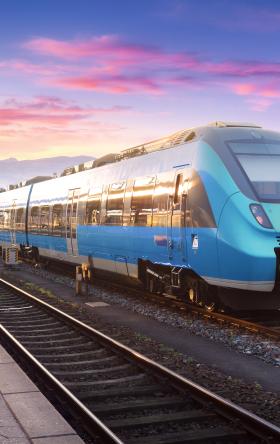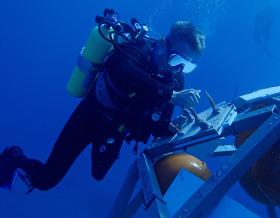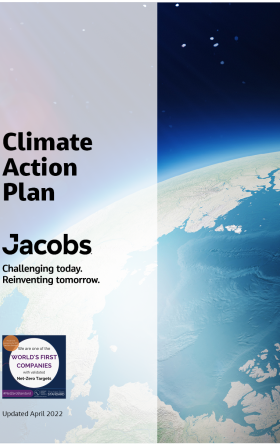Data-Driven Decarbonization at Heathrow Sets a New Standard for Aviation
Jacobs’ carbon cost analysis tool helps Heathrow align investment with emissions reduction—setting a global model for airport sustainability
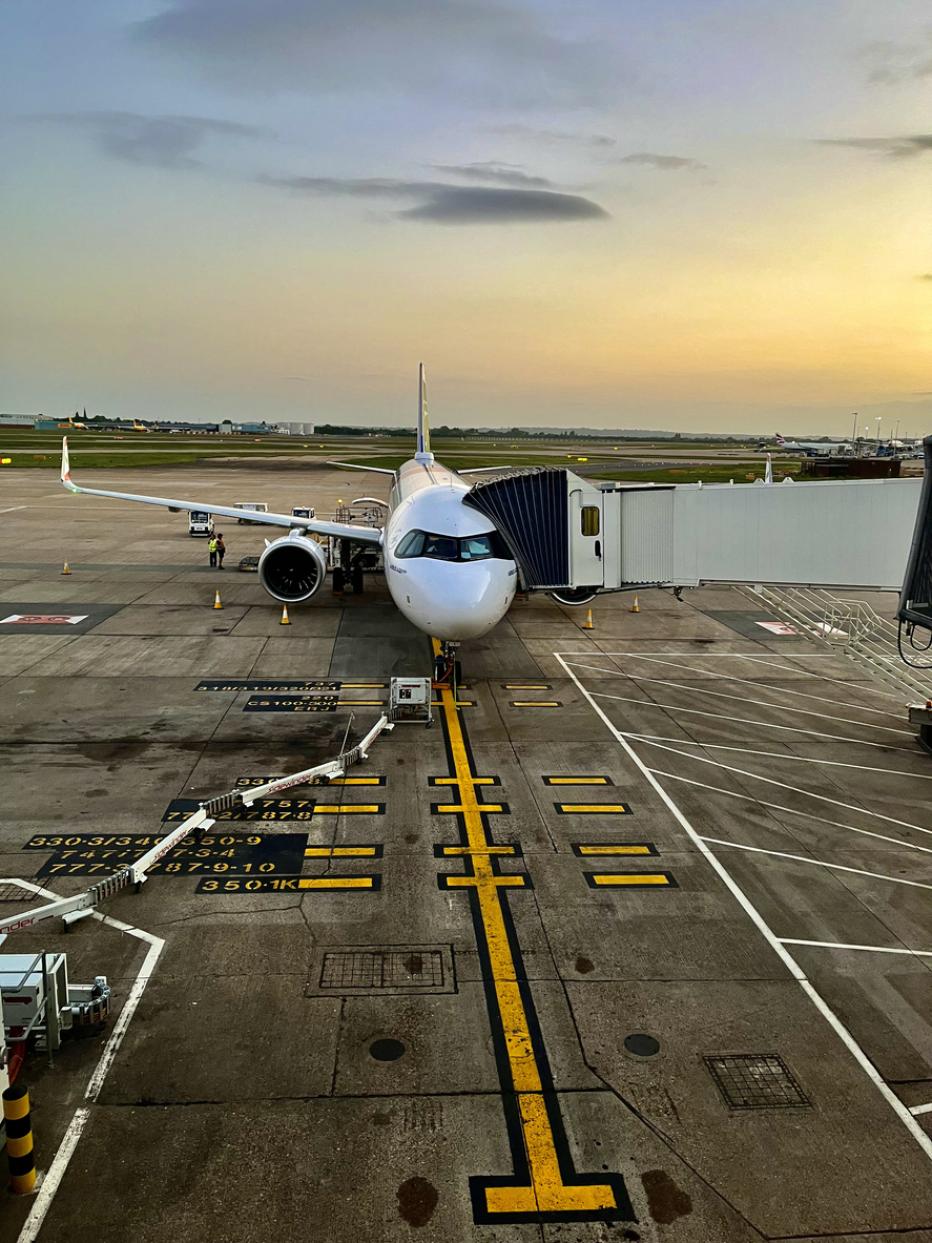
The aviation industry is at a pivotal moment. With increasing pressure from consumers and governments to decarbonize, airports around the world are seeking tangible, impactful solutions. Heathrow—“Britain’s Aviation Hub” and a global leader in aviation—isn’t just setting ambitious net-zero targets. It’s actively working to achieve them through a robust, data-driven approach that is redefining airport decarbonization.
Heathrow’s Marginal Abatement Cost Curve (MACC) tool
At the center of this effort is the digital Marginal Abatement Cost Curve (MACC) tool, developed by Jacobs in collaboration with Heathrow. Central to Heathrow’s Carbon and Sustainability Program, this tailored aviation model goes beyond traditional sustainability reporting. It’s an interactive dashboard that connects financial investment directly to quantifiable carbon savings (£/tCO₂e) over a project’s lifecycle—supporting program-wide prioritization.
This innovative tool allows Heathrow to:
- Strategically prioritize
Rank decarbonization initiatives based on cost-effectiveness and carbon abatement potential. This ensures capital is directed to where it will have the greatest impact—from electrifying ground support equipment to improving building energy performance. - Optimize investment
Demonstrate the environmental return on every pound spent. This data-driven insight enables financial decisions that align seamlessly with environmental goals. - Forecast and adapt
Model multiple decarbonization pathways, allowing for proactive planning and agile response to emerging technologies and evolving regulations.
-
MACC approach
DESNZ carbon values are based on a MACC valuation approach: setting the value of carbon at the level consistent with the level of marginal abatement costs required to reach U.K. targets (domestic and international).
-
MACC structure
The MACC ranks each carbon reduction workstream (left to right) by increasing cost per tonne of CO2e (£/tCO2e)
-
DESNZ carbon value
Used across government for valuing impacts on GHG emissions resulting from policy interventions (2020£/CO2e). Further carbon values are listed in Annex A.

-
MACC output
A column chart broken into discrete 'blocks', each representing an individual initiative or set of carbon abatement measures.
-
Considerations
The following considerations are applied to the MACC:
- Takes a conservative approach
- A snapshot in time
- Time-based and non-time-based inputs (eg. fluctuating energy prices)
- DESNZ 2026 carbon values discounted to 2022£
-
MACC utilization
The MACC curve has informed which projects should be prioritized at Heathrow and allows progress toward goals in the net zero strategy to be tracked.
Supporting a critical transportation hub
As a major transportation hub, Heathrow welcomed 83.9 million passengers in 2024, handled more than 470,000 flights, and generated approximately $4.9 billion (£3.6B) in annual revenue. In such a complex operating environment, the MACC tool brings precision and clarity—turning ambitions into measurable, financially sound actions. With Heathrow’s continued capital investment, this approach enables effective and responsible decarbonization.
A global benchmark for airport decarbonization
Heathrow’s adoption of this digital model sets a new standard for airports globally. The principles and capabilities behind the Jacobs MACC tool are scalable and transferable, offering a roadmap for other major airports pursuing net-zero goals.
Accelerating decarbonization globally
Airports worldwide can apply this proven methodology to identify and implement their most effective carbon-reduction strategies—advancing the entire sector toward net zero.
Building investor confidence
For investors seeking sustainable infrastructure opportunities, the MACC tool provides a framework that demonstrates a measurable, fiscally sound commitment to carbon reduction.
Standardizing best practices
Heathrow’s success can drive broader adoption of MACC analysis, establishing a shared model for decarbonization planning across the aviation industry.
In an era where environmental performance is business-critical, Heathrow—powered by Jacobs’ MACC tool—is delivering intelligent, measurable actions that generate both environmental and financial returns for the aviation industry.


